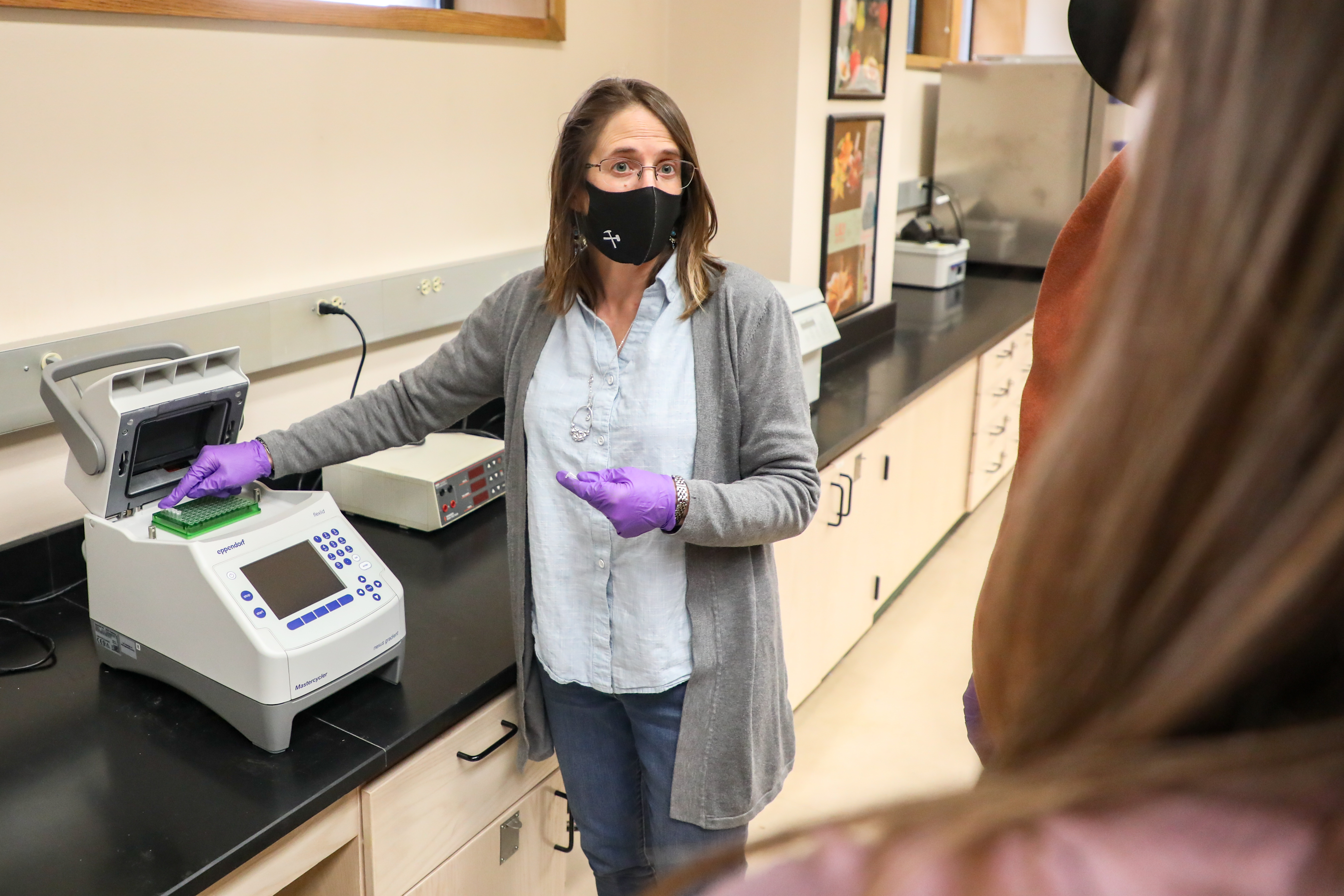Montana Tech Researchers to Purchase $1 Million Transmission Electron Microscope with National Science Foundation Grant

The National Science Foundation has awarded Montana Technological University $1 million that will be used to purchase and maintain a multifunctional electron microscope to significantly expand opportunities for research and discovery for the campus community and the state of Montana.
“This is a tremendous opportunity for Montana Tech to expand our research and educational capabilities, and it will impact students and researchers throughout the state,” Vice Chancellor for Research Angela Lueking said. “This instrument will serve as a resource for STEM education at all levels, from exciting middle school students on the scientific complexity of our environment to enhancing resources for K-12 teachers to advanced scientific and engineering research at Montana Tech.”
Dr. Marisa Pedulla is the primary author of the grant submitted in January 2022.
Dr. Pedulla’s primary research focuses on bacteriophages, viruses that infect and replicate in bacterial cells. She has photos of these tiny microbes hanging on her desk, taken with transmission electron microscopes at other campuses. The flat, 2-D images are used to give university students in Pedulla’s classes and K-12 students in the Clark Fork Watershed Education Program an idea of what phages look like.
Those images are rudimentary compared to what Montana Tech’s new transmission microscope will be capable of generating. This microscope includes a stage that tilts, and allows scientists to build a 3-D reconstruction of their sample. Students will be able to see subcellular structures measuring 10-9 meters, or a nanometer.
“This will help us visualize extremely small phages, as well as other biological and non-biological materials,” Pedulla said. “It will be a powerful research instrument for our campus.”
In addition, the microscope can also perform energy-dispersive X-ray spectroscopy (EDX), which determines the elemental composition of samples. This method is useful when analyzing ore, sediment samples from hot springs or geothermal features, stream and soil samples taken from Superfund sites, and environmental metal contaminants.
“This multifunctional microscope will increase Montana Tech’s research capacity,” Pedulla said. “We will be able to propose more experiments and ask questions we didn’t have the tools to research previously.”
Pedulla’s grant co-authors are Dr. Katie Hailer, Dr. Jack Skinner, and Dr. Jessica Andriolo.
“We’re very pleased and fortunate to have received NSF funding for this new, highly-capable TEM. Much of our research involves phenomena at the nanoscale, so the TEM will enable us to see small-scale materials, devices, and structures and perform elemental analysis with extremely high resolution,” Dr. Skinner said. “We have a talented and productive research team spanning Biology, Chemistry, and Mechanical Engineering, including a research focus in Biomedical Engineering. We look forward to continued and strengthened research collaborations at Tech and across the state and broader scientific community outside of Montana.”
The grant for the microscope includes funding for software and a 5-year service contract. It also pays for a microscopist to manage the system for 21 months. The microscope’s estimated arrival date is the end of the Spring 2023 semester.